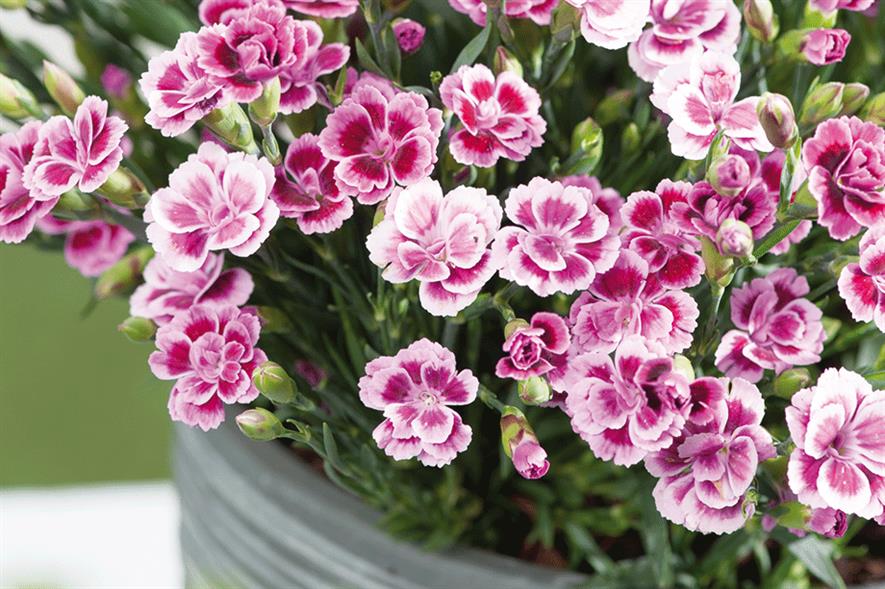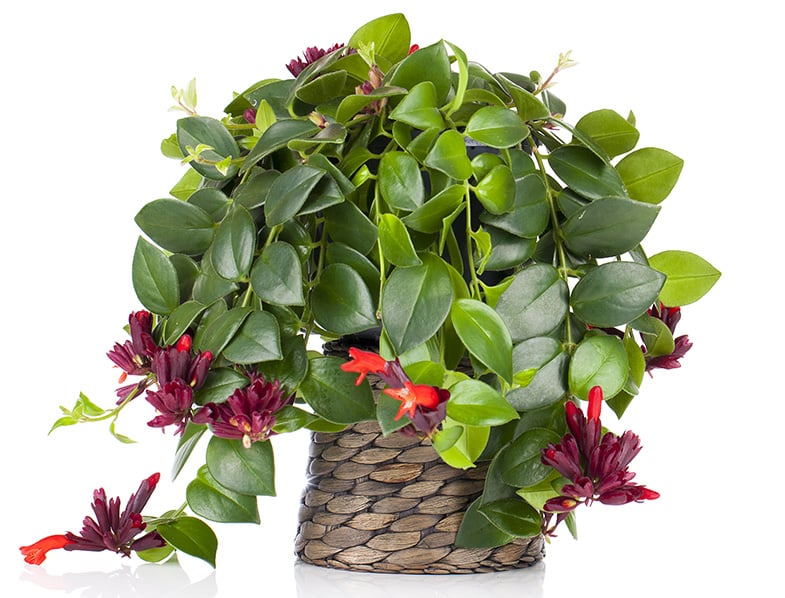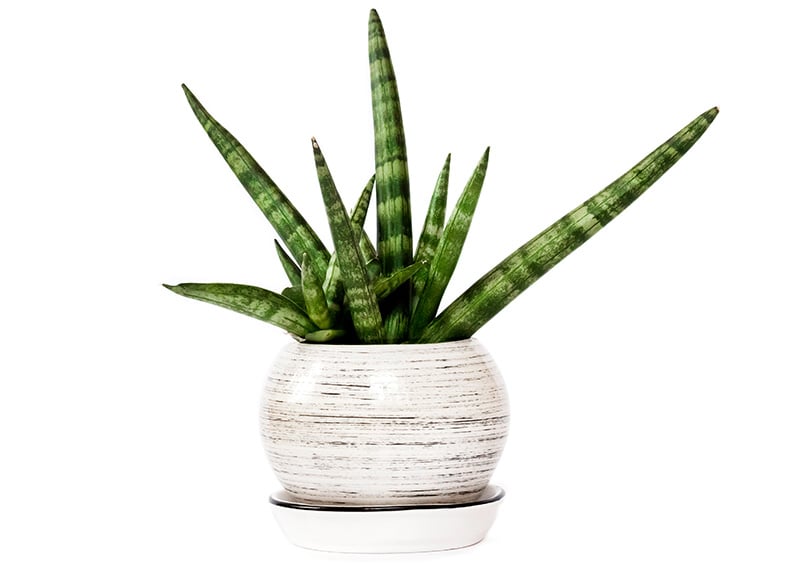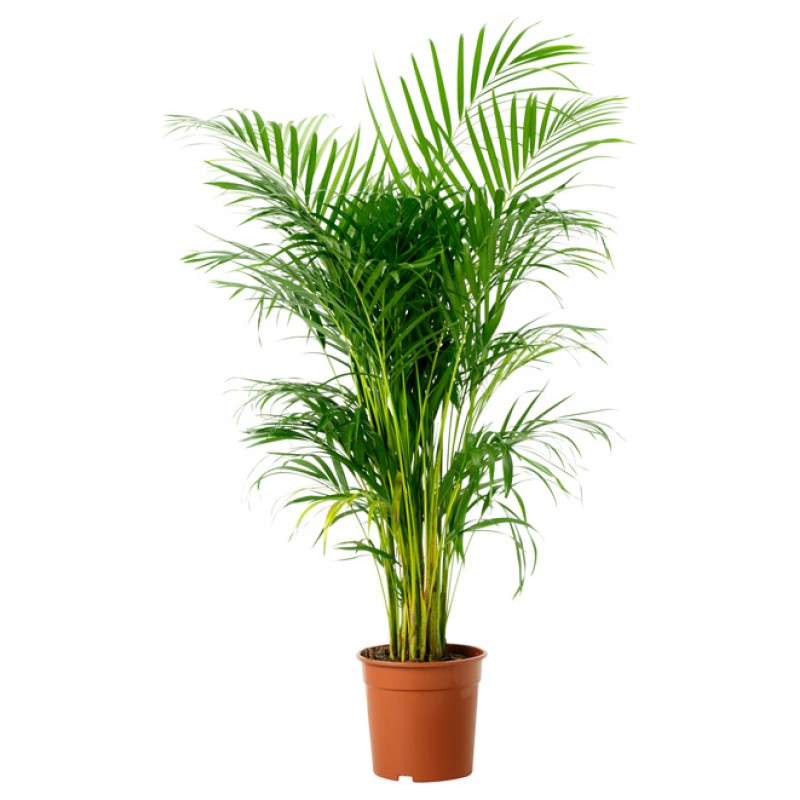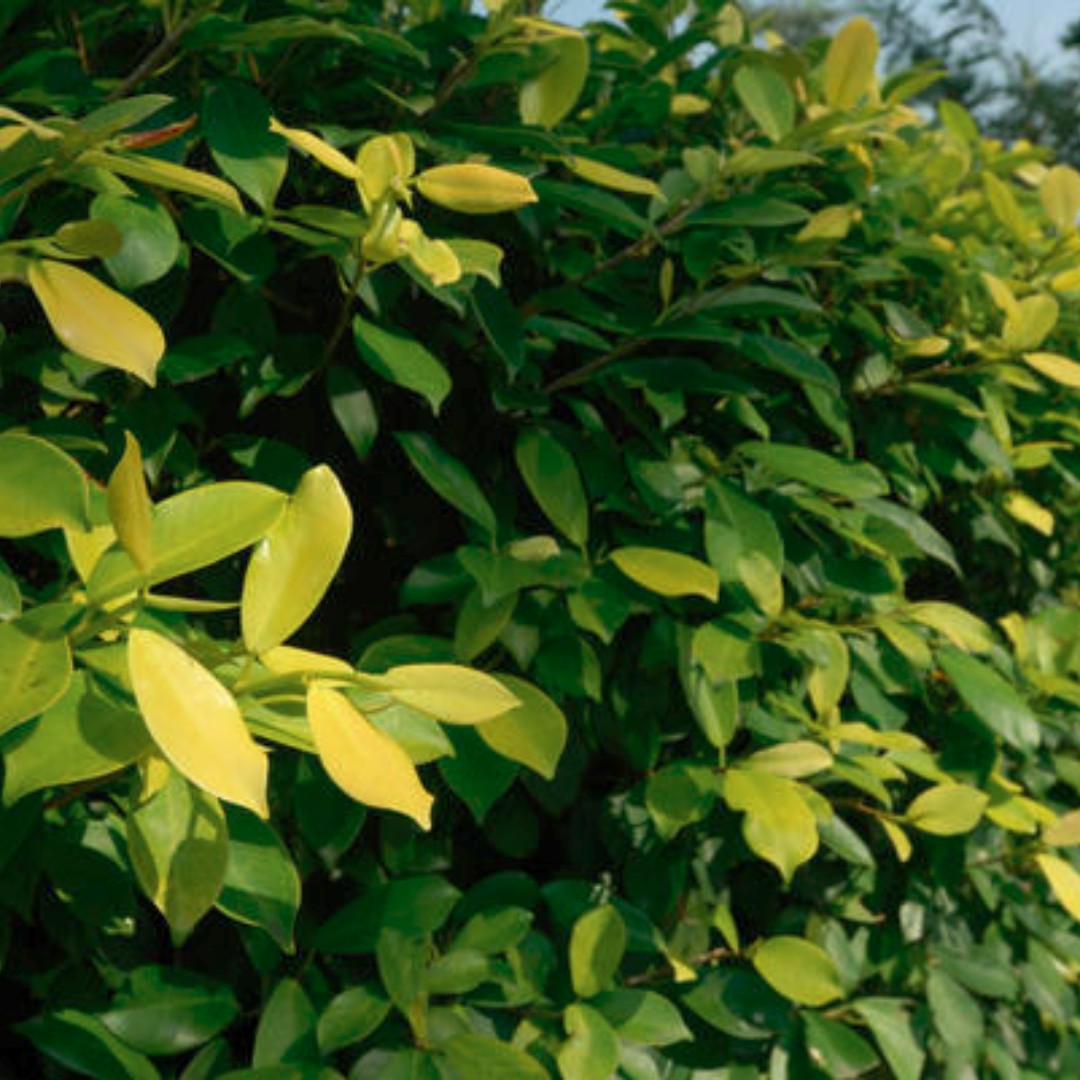Dianthus Plant
Plant Profile
- Plant family: carnation family (Caryophyllaceae)
- Type: carnations
- Origin: temperate northern hemisphere
- Herbaceous, persistent, cushion-forming annual or biennial plant
- Growth height: depending on the kind between 20 centimetres and 70 centimetres
- Blossom period: depending on the kind from May to August
- Colour: white, pink, red, magenta, neon yellow, champagne, purple and two-coloured
- Sepals on tall, simple or branched stems
- Perennial
Dianthus Plant
The dianthus plant is also called Sweet William (Dianthus barbatus) and
has a fragrance with cinnamon or clove notes. The plants are small and
usually between 6 and 18 inches (15-46 cm.) tall. Dianthus flowers are
most often in pink, salmon, red and white hues. The foliage is slender
and sparsely spread on thick stems.
Dianthus had a short blooming season until 1971, when a breeder learned
how to grow forms that did not set seed and, therefore, had a prolonged
their bloom period. Modern varieties will typically bloom from May to
October.
Read more at Gardening Know How: Dianthus Plants: How To Grow Dianthus
https://www.gardeningknowhow.com/ornamental/flowers/dianthus/growing-dianthus-plants.htm
Dianthus Plant
The dianthus plant is also called Sweet William (Dianthus barbatus) and
has a fragrance with cinnamon or clove notes. The plants are small and
usually between 6 and 18 inches (15-46 cm.) tall. Dianthus flowers are
most often in pink, salmon, red and white hues. The foliage is slender
and sparsely spread on thick stems.
Dianthus had a short blooming season until 1971, when a breeder learned
how to grow forms that did not set seed and, therefore, had a prolonged
their bloom period. Modern varieties will typically bloom from May to
October.
Planting Dianthus
Plant pinks in full sun, partial shade or anywhere they will receive at
least 6 hours of sun.
The plants need fertile, well-drained soil that is alkaline.
Read more at Gardening Know How: Dianthus Plants: How To Grow Dianthus
https://www.gardeningknowhow.com/ornamental/flowers/dianthus/growing-dianthus-plants.htm
Care
Carnations, dianthus don’t need much or intense care, but there are
still some details that need to be kept in mind in order to ensure the
best growth possible.
Location
The carnation, dianthus likes sunny, wind-protected locations, which
enable it to develop nicely. This applies to growth as well as colour
intensity and odour development. If you choose a half-shaded place, the
carnation will become less opulent.
Soil conditions
No matter if in a flowerbed, flower tub or balcony trough: it’s
important to choose the right soil conditions in order to get vital and
blossomy carnations.
- humous, nutrient-rich soil
- moderately damp
- permeable
- mainly chalky soil
- neutral pH-number below 7.0

The maiden pink (Dianthus deltoides) is an exception. Those also like
slightly sour soil. Carnations (dianthus) are sensitive to too much
humidity. That’s why they should not be planted next to other plants
that require much water. They should not be put near streams or rivers
either, because those areas are often permanently damp. The fringed pink
(Dianthus superbum) is one of very few carnations that enjoys humidity.
Substrate
In order to provide the optimal basis for growth, health and blossom,
substrate is generally recommended. Should carnations decorate a flower
tub or box, high-quality flower soil is necessary. It supplies
carnations with nutrients they need for ideal prosperity. They will be
more resistant and durable. Substrates that contain natural clay, bark
mulch or wood fibre provide the perfect soil airing. White peat and
perlite support the structure’s stability.
Planting
The perfect time to plant carnations is spring or autumn. Soil frost
should be over in springtime and not yet arrived in autumn. If there is
unexpected frost anyway, a protection foil could shelter the plants.
Plants in flowerbed
It’s necessary to prepare the soil properly to ensure that the
carnations develop stately. It should be aerated with a rake first.
Secondly, a hole for the plant can be dug. Stones or old roots need to
be removed. It’s recommendable to add quartz sand, because it improves
permeability and enables water to drain.
In addition, the soil should be mixed with compost or high-quality
substrate. This will improve the carnation’s powerful growth. If there’s
not enough chalk in the soil itself, some of it should be added as
well.
This is how you should proceed:
- depending on which carnation, you need to dig holes at a distance of about fifteen to thirty centimetres
- put approximately three centimetres of quartz sand into the holes in order to create drainage
- the hole should be twice as deep as the root ball’s size and there
needs to be a three centimetre gap between roots and soil surface
- mix the soil with substrate or compost and refill the hole
- press the soil firmly
- finally, you can water it slowly and moderately
Plants in a flowerpot
Planting carnations into flower tubs or balcony troughs works the
same way as planting them into the ground. It’s important to use
high-quality substrate, which provides carnations with the ideal basis
for growth. Instead of quartz sand, it is also possible to scatter
shards of earthenware on the ground, which works as drainage. You should
make sure that there is a minimum distance of 2 centimetres between
soil and the flower pot’s or box’ edge.
No water will spill over it when you water the flowers, even if the
soil becomes muddy. It’s recommendable to use a saucer, which collects
remaining water and prevents waterlogging if kept dry.
Moisture-sensitive carnations will develop better.

Watering
Most kinds of carnations dislike dampness and manage well in dryness.
That’s why they should only be watered moderately and not until the
soil is almost completely dry. You can easily test that by pressing your
thumb into the flower soil. If you can’t push it deeper than two
centimetres, you can water the flower.
Manuring
Although carnations don’t need much care, they enjoy manure. An
organic start fertilizer is recommended when replanting or repotting
fully-grown carnations. Apart from that, complete fertilizer should be
added before blooming time in spring. After pruning back the sprouts and
before a new blossom period, mineral fertilizer advisable. It should be
used sparingly, because carnations are light feeders.
Overview over manuring periods:
- start fertilizer when replanting or repotting
- complete fertilizer in spring
- mineral fertilizer after pruning back
- providing carnations in flower pot or balcony trough with liquid fertilizer every 4 weeks
- after manuring, flowers should be watered moderately; use chalky water if possible
Cutting
Withered stems and blossoms should be cut away as soon as possible.
They use up too many nutrients, which are needed for new blossoms.
Consequently, the flowers will have fewer blossoms and existing ones
will wither sooner.
The same applies to brown leaves, which can easily be removed.
Normally, they just fall off when leaves turn brown. At the end of each
blossom period, you can cut the flowers by maximal one third. This
improves regrowth and appearance. Pruning back is recommendable if the
plant has thin spots.
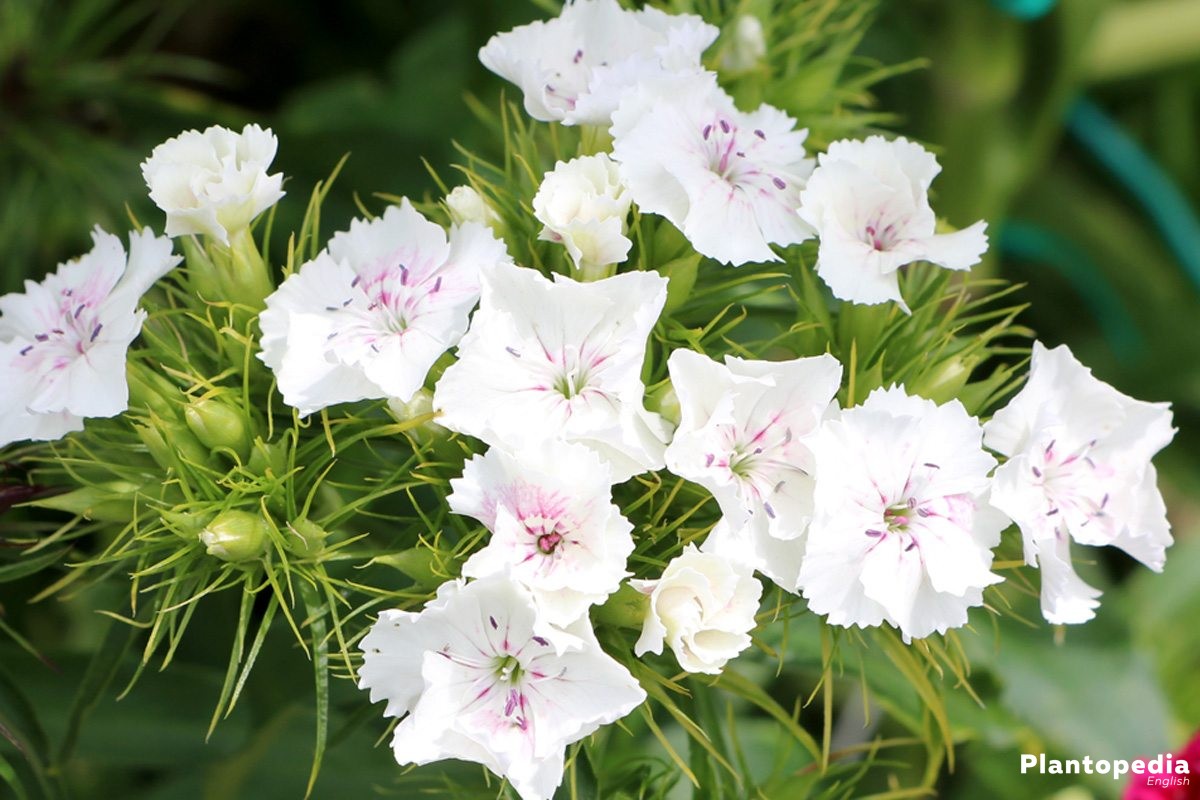
Carnations are beautiful cut flowers and look great in any vase. Two
or three centimetres above earth’s surface, the flower’s stem can be cut
off. This should be done when the blossoms are still slightly closed.
However, don’t cut them off in summer’s hot midday sun. The cut surfaces
show open pores and heat will damage the flower.
Overwintering
Most kinds of carnations are hardy until 15 degrees below zero.
Humidity can still damage them when snow and soil frost drench the soil.
Carnations in a flowerpot should be placed somewhere protected from the
wind. It’s not advisable to put flower tubs on the ground. They should
rather stand on polystyrene. It isolates carnations from cold soil
frost.
Carnations in the garden get more than enough humidity through the
ground in winter while the dampness of pot carnations needs to be
controlled regularly and watered if needed. You should only water them
when there is no frost.
Propagation
Carnations are either annual or biennial plants. That’s why it’s necessary to remember propagation in time.
Cuttings
The easiest and most uncomplicated way is the propagation through
cuttings. Cuttings of strong plants are cut at an angle and put into a
pot with a mixture of peat and sand in it. Perfect cuttings have no
blossoms, but at least three leaf nodes. The only thing you need to keep
in mind is to water in a steady manner. The roots need rather humid
soil to develop. Waterlogging, however, is to be avoided.
- planting time for cuttings: late summer or autumn
- time for root development: about eigth weeks
- after approximately eight weeks, you can plant the cuttings into the flowerbed
